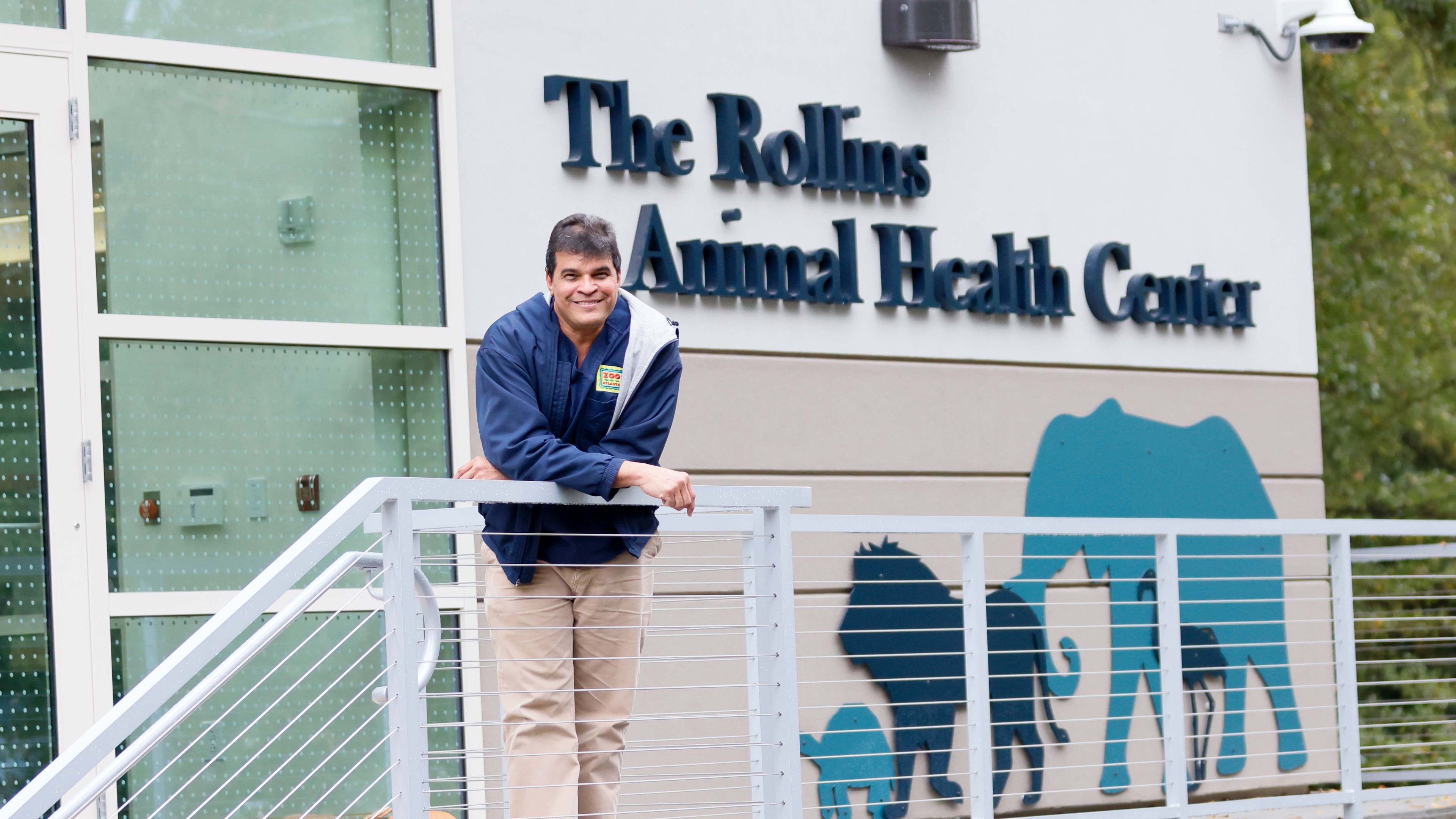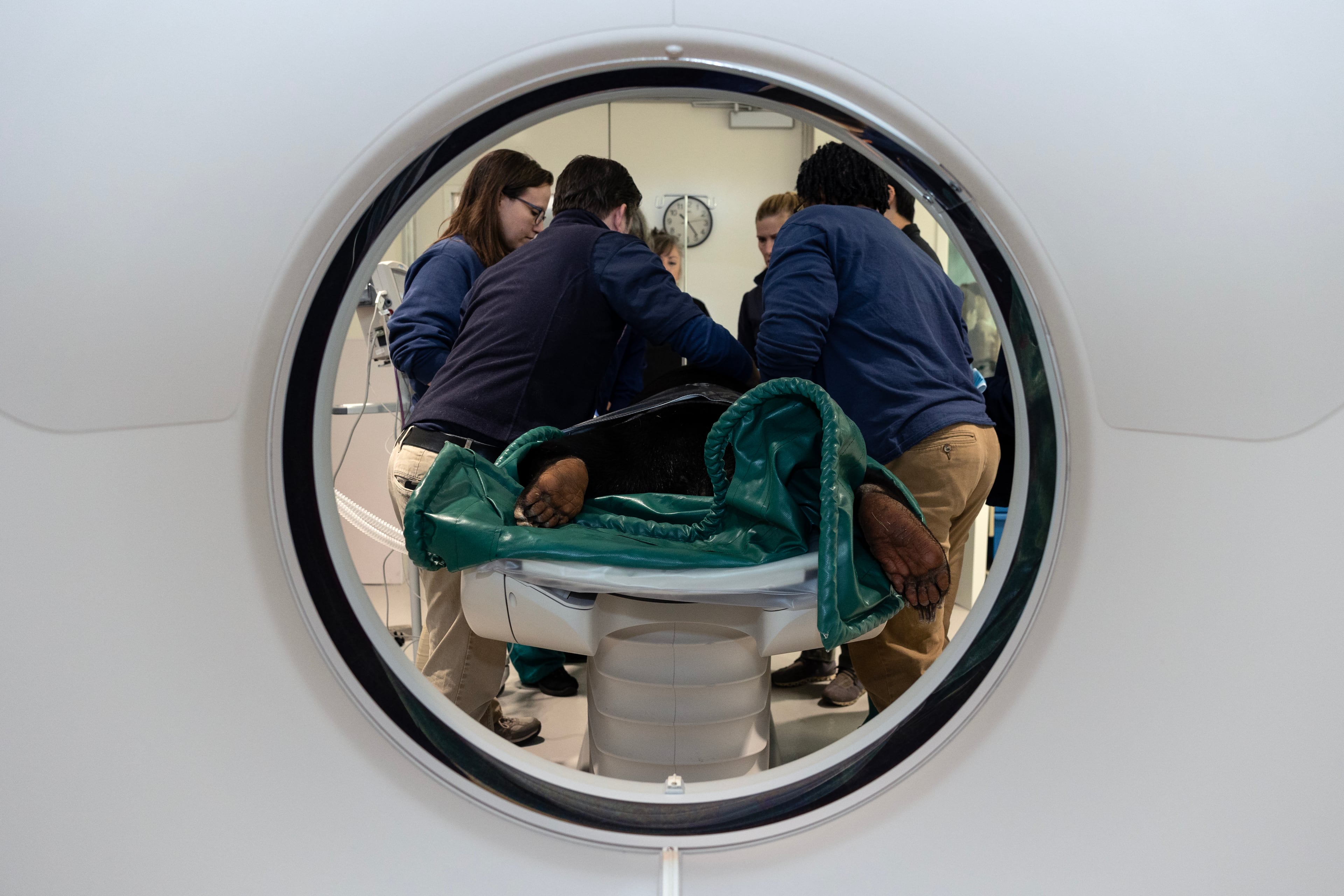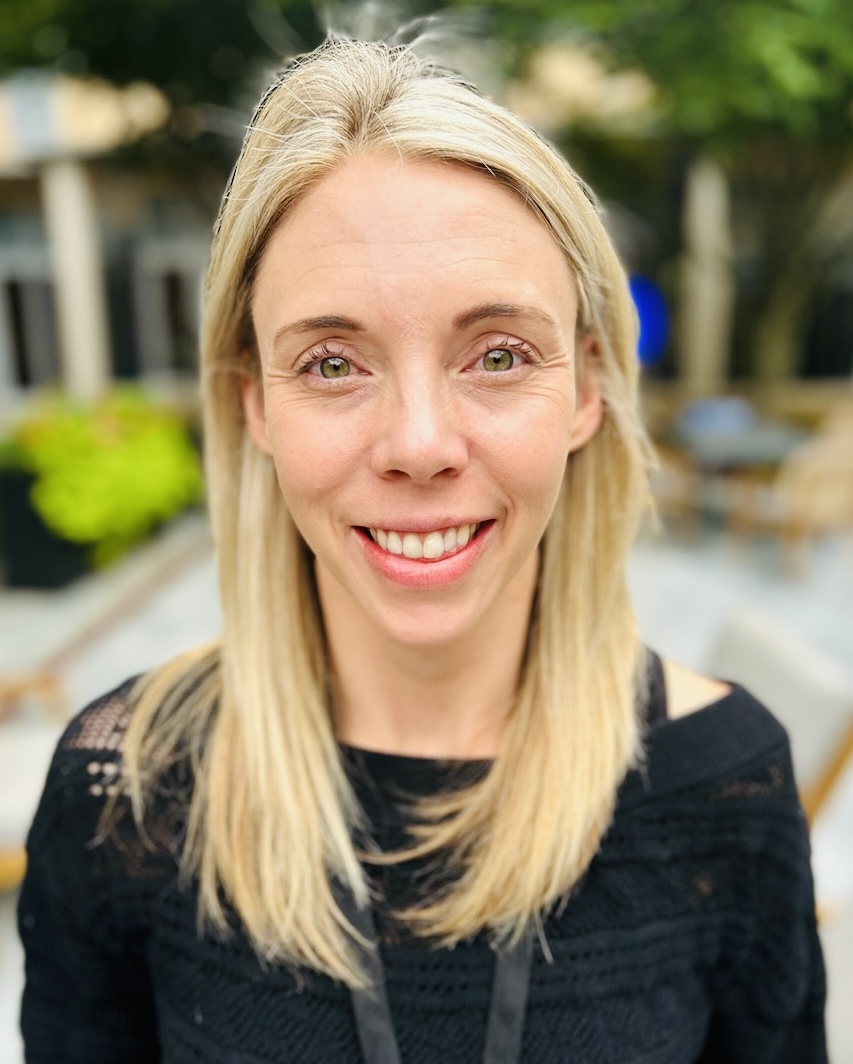Zoo Atlanta’s new $20 million health center a game-changer in animal care

Atlanta traffic is stressful on its own; try it with an anesthetized orangutan hooked up to medical monitors in the back of a van while driving from downtown Atlanta to Sandy Springs for an emergency CT scan.
That’s the recent memory Dr. Sam Rivera, vice president of animal health at Zoo Atlanta, recalls when asked about his staff’s working conditions before the Rollins Animal Health Center opened in October.
The former facilities consisted of a 1,600-square-foot hospital built 40 years ago and related facilities in scattered locations — a separate quarantine area, disjointed offices and another space for medical records. For CT scans, Rivera had to transport fragile, sometimes dangerous, animals off-site to a partner facility. That meant only critical cases, not preventive ones, would warrant the trip.
Those days are over now. The new 17,000-square-foot, state-of-the-art veterinary complex has its own CT scanner. The machine, which would cost about $1 million if purchased new, cost roughly a quarter million refurbished. Just a few weeks ago, Rivera, 56, of Canton, used it on one of the zoo’s most beloved gorillas, Kuchi, a 40-year-old female. There was no emergency and no need to brave Atlanta traffic. Riviera unloaded Kuchi at the center’s backdoor and used the imaging machine to aid him in his treatment of her arthritis and dental health.

“Now, not only do we avoid taking those sensitive, sick, dangerous animals out of the zoo, but we can provide that service to more animals. CTs are far better than X-rays. So we can do that here now,” said Rivera.
The new center, named in recognition of the Gary W. Rollins Foundation’s charitable gift of $3 million, was funded by a $21 million capital campaign. The campaign garnered six donations of $1 million or more from Lettie Pate Evans Foundation, Arthur M. Blank Family Foundation, A Friend of the Zoo, The Marcus Foundation, The Sara Giles Moore Foundation and The Zeist Foundation.
The center includes a surgical suite, treatment suite, laboratory, pharmacy, quarantine pens, radiology room, necropsy suite and animal meal prep kitchen, plus offices, a conference room and two residential apartments for two interns.

The facilities employ 10 staff members, including three full-time veterinarians, a zoological medicine resident, three veterinary technicians, an office manager, assistant hospital administrator and a veterinary technician assistant. The team generally sees 30-40 animals a week for treatment, preventive medicine, lab testing or other health care needs.
Located at the southeast end of the zoo campus, the new center is not currently open to the public. The vision, however, is to start hosting educational tours in 2025. The personable Rivera recently gave AJC a peek at the facilities.
Behind-the-scenes tour
Upon entering the center, visitors are struck by large, storied photographs on the walls in the bright, pristine front hallway. One is of Abu, a geriatric giraffe getting fitted for an orthopedic shoe to alleviate his arthritic foot pain. Across the hall is an X-ray image of an endangered beaded lizard from Guatemala.
Down the hall, large windows permit observation of the action unfolding in the surgical and treatment suites. Rivera’s office across the hall likewise has an observation window. He jokes he too will be an “animal on display.”
His office gives a glimpse of his sharp, knowledgeable mind and passion for exotic animal health. Large bookcases display his own personal library of veterinary medicine books organized by species.

One shelf holds pieces of antique veterinary equipment he rescued from a shuttered clinic. There is an old portable oxygen tank, an antique scale used to measure minuscule amounts of medecine and a veterinary otoscope used to look inside animal’s ears and eyes. Hanging on a stand is an old tattoo gun once used to give animals permanent IDs before the age of microchips.
“That’s my little museum,” he said proudly.
His excitement for the new center is palpable as he tours its assets. He points to the surgical room where just that morning, his team performed a procedure on a red speeding cobra. Earlier in the week, his team worked on a monkey with chronic heart disease and performed a biopsy on a toucan with liver disease.
In the clinical rooms, cameras are mounted to record and stream video of procedures.
“One of the things that we were very emphatic about was education … We want to make sure not only can we record these procedures, we can have a vet school or high school log in remotely and learn about what we’re doing,” Rivera said.
In the back of a procedure room, a set of double doors open to a loading dock and animal scale designed to streamline the process of bringing animals into the clinic. What looks like a closet in one corner is actually a negative-80 degree freezer that stores things like embryos, blood and tissue samples helpful for tracking long-term genetics or aiding reproduction. Inside Panda semen was packed in cryogenic tanks, waiting to be flown to China where Zoo Atlanta’s former pandas now live.

Upstairs from the clinical suites, two residential apartments will host two veterinary interns for six weeks at a time. Having been a volunteer and intern at zoos in his youth, Rivera is particularly excited to house students starting in early 2025. Two of his current colleagues were once interns, he notes.
The research lab and pharmacy are in the back of the building. Having the lab in house cuts down on the time it takes to get test results. Monitors in the lab office display video feeds of the zoo’s quarantine areas.
On the day of the tour, newly arrived meerkats from Africa were visible in a holding pen where they were getting acclimated to their new environment and also as a precaution from possibly spreading disease to the zoo’s current animal population.
Destined for the zoo
For as long as he can remember, Rivera, who grew up in Puerto Rico, has been fascinated with exotic animals.
“I remember my first visit to the zoo. I had this wax gorilla in my hands. For Christmas, growing up, all I wanted was zoo animals,” Rivera said.
While in college at the University of Puerto Rico, Rivera did not have access to veterinary medical training, so he volunteered in the vet department at a local zoo. As soon as he could, he transferred to Kansas State University College of Veterinary Medicine.
“You can imagine the culture shock, being a tropical species, never been colder than 80 degrees. That first winter in Kansas I thought I was going to die,” he said laughing.
In Kansas he met the woman he credits with bringing him to Atlanta: his “college sweetheart” Brenda from Montana. After earning her doctorate, Brenda Rivera landed a faculty position at Morehouse School of Medicine in Atlanta. Rivera followed her.
“We’ve been together for almost 30 years,” he said. “I’m a tropical species, and she’s a northern species.”
Rivera’s first visit to Zoo Atlanta impressed him; particularly a program the zoo was operating at the time to prepare Golden Lion tamarinds to be returned to the Brazilian rain forest.

“The conservation program — that left an impression,” he said.
Rivera started sending handwritten letters to Zoo Atlanta’s head veterinarian expressing interest in volunteering. His diligence paid off. He bypassed volunteering and was hired as a part-time vet in 1999. He went full time six years later. In 2022, he was named vice president of animal health.
A major milestone in his quarter-century career occurred when he accompanied Zoo Atlanta’s four pandas on their return trip to the Chengdu Research Base of Giant Panda Breeding in October. His tearful goodbye was a testament to just how much he connects with the animals in his care. Now, like a dad with kids in college, Rivera checks up on the pandas, watching a live feed on his phone of the pandas munching on bamboo in China.
In addition to his day-to-day clinical role caring for animals representing more than 200 species, Rivera has had the opportunity to work on groundbreaking conservation projects around the world, including sea turtles in the Galapagos, amphibians and reptiles in South America and pandas in China.
Some of his research has been published for the benefit of other zoologists. He also serves as president of the American Association of Zoo Veterinarians and is a co-advisor for the Association of Zoos and Aquarium’s Gorilla Species Survival Plan.
Of all his accomplishments and accolades, Rivera said his proudest are his contributions to the design and construction of the new animal health center, from helping create the clinic’s floor plans to consulting with the contractor and architects.
“We’ve been dreaming about this place for decades,” he said. “I could retire tomorrow and be very, very happy where we’re at with our team because of that accomplishment.”
Raymond B. King, Zoo Atlanta’s president and CEO, is likewise pleased.
“These facilities build the team’s capacity as they provide outstanding, skilled care for the hundreds of animals who call Zoo Atlanta home,” he said. “The veterinary team now has a broader ability than ever before to share and exchange knowledge with other institutions and to benefit students pursuing veterinary careers.”



